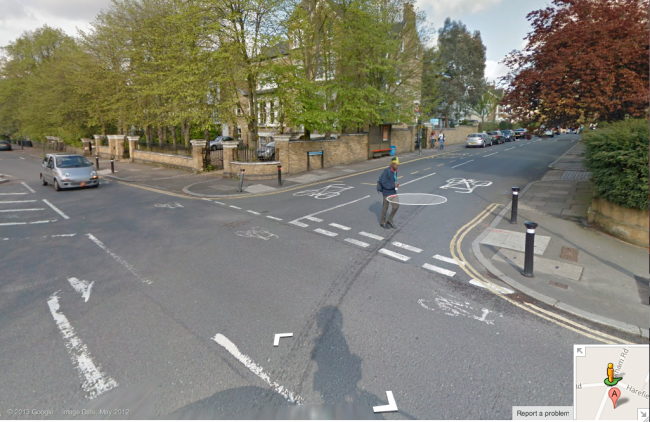The other night I decided to walk the perimeter of Lewisham Borough, or to try to follow it as close as is possible without a ladder. I don’t know the exact distance, but I was out for ten hours, and I’d guess I walked around 20 miles. One reason I did this was that I wanted to go for a long walk, but didn’t want the stress of deciding on a route myself. When walking for the sake of the experience, I usually try to connect up different centres, parks, curious infrastructures or consciously ‘random’ streets from different suburbs, but I often feel self-conscious of the limitations of the decision-making process I’ve used in choosing where to go. I wanted to be relieved of this responsibility, but didn’t want to follow a consciously designed itinerary. Rather, I hoped to achieve a quasi-random selection of varied spaces. I would thus be able to experience space and movement as more of a spectator than a consciously positioned actor, but without feeling that this voyeuristic exercise was the main reason behind the action.
The other, more significant purpose to the walk – to achieve a better sense of the identity of the borough I live in. I was often having to look carefully at my Ordanance Survey map under streetlights to locate the feint dashed grey line I was following, and imagining how I’d respond to someone asking me where I was trying to get to, I’d like to think our conversation would have gone something like this:
Dude: Alright mate, where are you trying to get to?
Me: Oh, nowhere in particular… it’s pretty weird actually, I’m really not going anywhere at all, just round in a really big circle.
D: But you’re obviously looking for some place on that map – I mean you can’t go for a walk without having different destinations en-route can you?
M: I know what you mean but seriously, it’s like I’m actually passing around anywhere that could be described as a notable public place. I know it’s the middle of the night, but I’ve actually not seen a shop for ages, pretty weird huh?
D: So you’re going for a walk where you try to avoid going through anywhere interesting? Why?
M: It’s more like that I’m going around something big to try to figure out what it is. Ok, you might think I’m a nutter but I’ll tell you what I’m doing, I’m walking around Lewisham Borough.
D: Fair enough. But it’s not like there’s anything interesting in the middle of Lewisham Borough is it? I mean it’s not even like the buzzing metropolitan hub that is Lewisham sits in the centre of the borough does it? It’s right near Greenwich!
M: Haha that’s so true, it’s not quite the same as Iain Sinclair walking around the edge of London is it? But then sometimes you doubt what that thing ‘London’ is, that ambiguous thing in the middle, know what I mean? Lewisham, London, I’m starting to think they’re just politics. And I’m not sure how much tracing out their edges gives you a particularly accurate sense of their identity! I’ve decided I like doing this cause the social housing is different on my left to my right – you can feel quite materially the different political powers and their different approaches to problems they’re faced with in the design and maintenance of their architecture. And as it happens it does seems like a lot of the land use on the edges of boroughs is social housing, perhaps because the interstitial spaces I’m following were often relatively late to be built on.
D: As if these council flats function as the city walls you’re following!
M: Yeah, or often the boundary seems to follow hilltops, parks or rivers. But what I was saying before – when I’m done I hope to have more of a sense of, not the identity, character or centre of the borough, but the extremities or limits, and their pretty dramatic differences. Lewisham near the Thames is so different to Lewisham near Southwark or Lewisham near Bromley in a posh bit or again still near Downham. I’d like to think that’d give me a better sense of the differences that start to characterise Lewisham. I’ll admit it’s pretty futile to be honest.
I found myself paying a lot of attention to the railway lines, roads and rivers I crossed, and the ways they had changed when I crossed them for a second time, on the other side of the borough. Focussing on the railway lines gives you a strong sense of the influence of central London on the urban development of the borough that was organised around the infrastructure of one railway company — on the southeast side of the borough there are many different two-track lines, but on the northwest side there just is one main grouping of many different lines on a cluster of viaducts near Surrey Quays as they begin the approach into London Bridge. The differences within Lewisham borough are dramatic, and although it makes me doubt the importance of London boroughs as geo-cultural entities, I do want to repeat the experiment on other boroughs, if only to get a wider sense of the different historical/economic/cultural presences of ‘London’ that can be read in the extremities of each borough.


